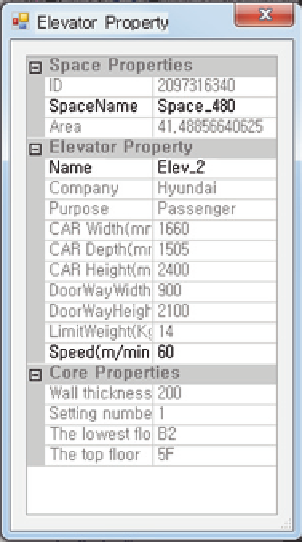Geoscience Reference
In-Depth Information
Fig. 19
An example of
elevator property
5 Conclusion
While the recent increasing interests in 3D spatial information for location based
services, applications of spatial information has been focused on outdoor space.
However, eighty-percent life time of people has been spent at indoor space, the
importance of indoor space has rapidly increased. In this chapter, the objective is to
develop indoor space feature model and indoor space facility model to support indoor
facility management applications. We have developed CityGML Indoor ADE to
define additional feature classes based on CityGML in LoD4. To validate CityGML
Indoor ADE space module, we generated XML document based on XML schema,
and developed the viewer to visualize the XML document. The sample data for the
indoor facility management applications was generated by using GongBuilder.
Indoor facilities also can be applicable for energy management with additional
information. For example, speed and capacity properties of an elevator can be used
with population of the building to manage flexible operating. Through the imple-
mentation of the CityGML Indoor ADE and construction of sample data, we show
the CityGML Indoor ADE can be an alternative method for representing indoor
space and also can be used for indoor facility management.
Even though this study demonstrated the implementation of CityGML Indoor
ADE, in the future, the proposed data model should be improved to represent top-
ological relationships among the indoor space features in order to provide indoor
LBS such as indoor navigations.

